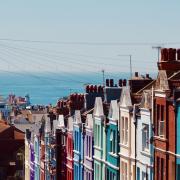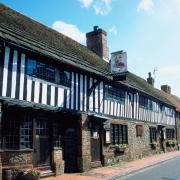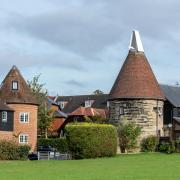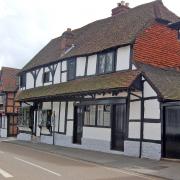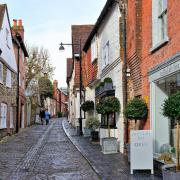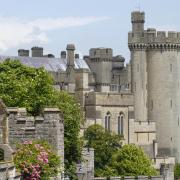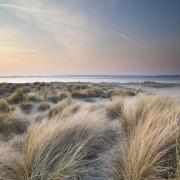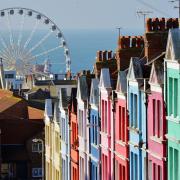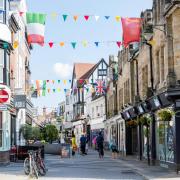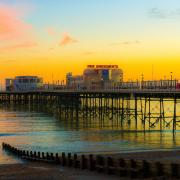We take a guided tour of Brighton’s often-overlooked neighbour, Hove
Stepping off the train to be met by my guide for the day I confess to wondering, what exactly is Hove? Andy Garth's first words increase my suspicion that it may be suffering some sort of identity crisis. "Opened on 1 October, 1865, the station was originally called Cliftonville, then West Brighton and then Hove and West Brighton," he reveals as we set off in the sunshine. It wasn't until 1895 that the authorities at last came to terms with reality and finally had the self-confidence to call it Hove.
Clearly the close proximity to Brighton has been the dominant factor in the growth and development of Hove but Andy, who makes a decent living buying and selling local memorabilia, starts by taking me way back to when all that surrounds us was green fields and the settlement comprised little more than one road and a church. So insignificant was 'Hoove', as it then was, it didn't even merit a mention in the Domesday Book.
According to the census of 1801, there were only 101 residents living in houses clustered either side of Hove Street. Boosted by the patronage of the Prince Regent, later crowned George IV, Brighton boomed and the knock-on effect on neighbouring Hove was dramatic. Impressive and imposing Regency villas sprung up in the 19th century on exceptionally elegant estates either side of wide boulevards sweeping down to the sea. Anxious to metaphorically distance themselves from impoverished Hove, they adopted smart names such as Brunswick, Cliftonville and West Brighton.
As we wander about, I form the opinion that, unlike Brighton with its haphazard layout, Hove is better organised and has a discernible grid-like pattern with parallel avenues and streets intersecting at right angles. One of the key figures responsible for the impressive development was Sir Isaac Goldsmid. A founder and director of the London, Brighton and South Coast Railway, he was an interesting character who, in 1841, became the first practicing Jew to be made a baronet. He also contributed to what developed into a strong connection between Jews and Hove. One factor that might have encouraged Jewish settlement is the strong dissenting tradition in both Brighton and Hove that still exists today. Andy suggests this same acceptance could explain the growth of the local gay community.
For whatever reason, a number of notable Jewish people have lived in Hove. In the 19th century these included Dr Nathan Adler (the Chief Rabbi), Karl Marx's daughter Eleanor and Maria Basevi before she married Isaac D'Israeli and gave birth to Benjamin, who later became Prime Minister.
Although many are now divided into flats, Andy and I discuss in which magnificent Regency house we would like to live and stop outside 8 Kings Gardens, which is his choice. It belonged to the Sassoons, another influential Jewish family who were close friends and confidants of the Prince of Wales, later King Edward VII. The Prince often stayed here, sometimes to enjoy the company of the attractive actress Lily Langtry, to whom the Prince was introduced by Reuben Sassoon. Reuben was one of three brothers living in Hove, a state of affairs that prompted the social commentator Henry Labouchere to describe this strip of coast as: "Four miles long and one mile in depth with a Sassoon at each end and another in the middle."
Andy and I look across to where Dave Gilmour of Pink Floyd fame lives before passing a statue of Queen Victoria who, apparently, didn't much care for Brighton or Hove. Grand Avenue used to be the street, and Adelaide Crescent was modelled on the equally splendid Royal Crescent in Bath.
A little uphill is Palmeira Square, named after Sir Isaac Goldsmid, who was awarded the title Baron de Goldsmid and de Palmeira by the Portuguese government for sorting out a financial dispute they had with Brazil; an honour he was allowed to use in this country by courtesy of a royal license.
Formerly owned by Sir Isaac and now an attractive open space, this peaceful spot has witnessed a couple of remarkable events. In what could be described as the Eden project of its time, the largest dome in the world was erected here. The brainchild of landscape gardener Henry Phillips and largely financed by Goldsmid, work began in the autumn of 1832 on a gigantic 'Athaeum' (flower-house). It was 165ft in diameter, 65ft tall and covered one-and-a-half acres. The dome was designed to house tropical trees and shrubs, hundreds of flower varieties and numerous other plants at a constant temperature of 90 degrees Fahrenheit.
Cast iron girders were imported into nearby Shoreham Harbour and transported to the site by teams of horses. A total of 40,000 sq ft of glass was used. Sadly it all came crashing down on 30 August 1833 when the last section of scaffolding was removed. The shock of the disaster caused 54-year-old Phillips to go blind and he never recovered his sight.
The somewhat more permanent construction of a grand house in Palmeira Square some 20 or so years later required the levelling of what transpired to be a 20ft tall tumulus, or burial ground, dating back to 1200 BC. Workmen uncovered various treasures including what is now known as the Hove Amber Cup, which is on display in Hove Museum and Art Gallery.
Continuing gently uphill we stroll past 13 Palmeira Avenue, which is where Sir Jack Hobbs once lived. Sadly, England's greatest ever batsman scored all of his 61,670 runs and 199 centuries for either Surrey or England. Some of them will have flowed from his bat just around the corner at the County Ground, the home of Sussex County Cricket Club, which relocated from the nearby Royal Brunswick Ground in 1871.
As well as Jack Hobbs, this wonderfully attractive and atmospheric ground witnessed the first batsman in first-class cricket to be given out 'handled ball'. That doubtful honour was bestowed upon George 'Farmer' Bennett while batting for Kent here in 1873. In the very same year, Worcestershire was dismissed for a miserable total of 19. One of the few to provide deckchairs for those who want them, the ground could accurately be described as perfectly charming.
Although not much of a cricketer, the young lad who attended the small school just up the road at 29 and 30 Brunswick Road from 1883-1885 was nevertheless to have quite an impact on the 20th century. Probably sent to the quiet prep school run by sisters Charlotte and Kate Thompson because of its proximity to the family doctor, Robson Roose in Brighton, the rather sickly Winston Churchill much preferred it to his previous school in Ascot and did well enough to subsequently gain entrance to Harrow.
As it was for many others, our final stop is the graveyard at St Andrew's Church. We pause on the way to note the former frontier between Hove and Brighton that ceased to have any relevance after the two merged in 1997 and the subsequent single entity was granted city status in 2001. Connecting Montpelier Place with Western Road, Boundary Passage is a remnant of the former separation and an engraved stone set into the pavement marks the precise dividing line. Although there's no 'back-stop' agreement, Andy thinks it's unlikely a hard border will return post Brexit.
Dating back to the 12th century, St Andrew's Church was reconstructed and enlarged in 1836. Excited to learn that Sir George Everest is buried here, I instinctively search for the highest gravestone and am a little disappointed that his is no taller than the others. Since he had no connection with Hove, quite why the man who was the first to determine the precise height of Mount Everest is buried here alongside his two children, sister and father-in-law is something of a mystery.
www.brightonandhovestuff.co.uk
More…
- The history of Rye - In the latest installation of his Secret Sussex series, Clive Agran visits the Cinque Ports town of Rye - where the influence of France is all around




